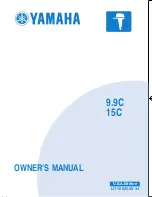
3.
Curiosity Nano
Curiosity Nano is an evaluation platform of small boards with access to most of the microcontrollers I/Os. The
platform consists of a series of low pin count microcontroller (MCU) boards with on-board debuggers, which are
integrated with Microchip MPLAB
®
X. Each board is identified in the IDE, and relevant user guides, application notes,
data sheets, and example code are easy to find. The on-board debugger features a Virtual COM port (CDC) for serial
communication to a host PC, and a Data Gateway Interface (DGI) GPIO logic analyzer pin.
3.1
On-board Debugger
The PIC16F15376 Curiosity Nano contains an on-board debugger for programming and debugging. The on-board
debugger is a composite USB device of several interfaces: A debugger, a mass storage device, a data gateway, and
a Virtual COM port (CDC).
Together with Microchip MPLAB
®
X, the on-board debugger can program and debug the PIC16F15376.
A Data Gateway Interface (DGI) is available for use with the logic analyzer channels for code instrumentation, to
visualize the program flow. DGI GPIOs can be graphed using the
Data Visualizer
.
The Virtual COM port is connected to a UART on the PIC16F15376 and provides an easy way to communicate with
the target application through terminal software.
The on-board debugger controls a Power and Status LED (marked PS) on the PIC16F15376 Curiosity Nano. The
table below shows how the LED is controlled in different operation modes.
Table 3-1. On-Board Debugger LED Control
Operation Mode
Status LED
Boot Loader mode
LED blink at 1 Hz during power-up.
Power-up
LED is ON.
Normal operation
LED is ON.
Programming
Activity indicator: The LED flashes slowly during programming/debugging.
Fault
The LED flashes fast if a power fault is detected.
Sleep/Off
LED is off. The on-board debugger is either in Sleep mode or powered down. This
can occur if the kit is externally powered.
3.1.1
Virtual COM Port
The Virtual COM port is a general purpose serial bridge between a host PC and a target device.
3.1.1.1
Overview
The on-board debugger implements a composite USB device that includes a standard Communications Device Class
(CDC) interface, which appears on the host as a Virtual COM port. The CDC can be used to stream arbitrary data in
both directions between the host and the target: All characters sent from the host will be sent through a UART on the
CDC TX pin, and UART characters sent into the CDC RX pin will be sent back to the host through the Virtual COM
Port.
On Windows machines, the CDC will enumerate as
Curiosity Virtual COM Port
and appear in the Ports section of the
device manager. The COM port number is shown here.
On Linux machines, the CDC will enumerate and appear as
/dev/ttyACM#
.
On MAC machines, the CDC will enumerate and appear as
/dev/tty.usbmodem#
. Depending on which terminal
program is used, it will appear in the available list of modems as
usbmodem#
.
PIC16F15376 Curiosity Nano
Curiosity Nano
©
2019 Microchip Technology Inc.
User Guide
50002900B-page 6
Downloaded from
Downloaded from
Downloaded from
Downloaded from
Downloaded from
Downloaded from







































